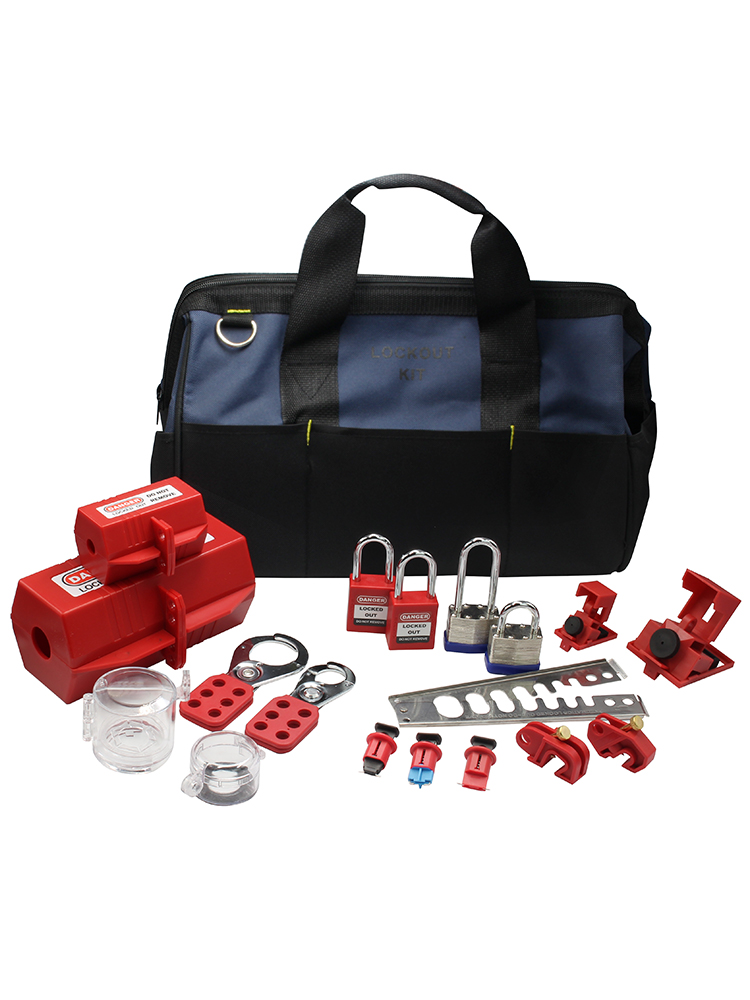What types of lockout solutions are available that comply with OSHA standards?
Having the right tools for the job is important no matter what industry you work in, but when it comes to lockout safety, it is critical that you have the most versatile and sure-fit devices available for your employees. Four types of lockout devices are available to help you meet OSHA requirements in your facility and establish responsibility and accountability among your employees.
1. Padlocks
Like all lockout devices, safety lockout padlocks must be provided by the employer and standardized. They must be distinguishable from other locks, used only for lockout purposes and always be identifiable with the name of the person who applied the lock.
Optimally, lockout padlocks should be key-retaining to ensure the padlock is secured and locked before the key can be removed. A best practice for choosing a safety padlock is to select a lightweight, non-conductive model that can easily be customized for your facility.
2. Tags
Tags play a critical role in lockout/tagout. They provide a warning against hazardous conditions that may occur if a machine or piece of equipment is energized. Tags communicate important information about the lockout condition and can provide photo identification of the employee performing the maintenance.
Lockout tags commonly are used in two ways: With locks to identify the lock owner; or on an exception basis, tags can be used without a lock. If the tag is used without a lock, OSHA stipulates the tag must:
Withstand the environment to which it is exposed
Be standardized and distinguishable from other tags
Include clear warnings and instructions
Be attached with a non-reusable, self-locking device that can withstand 50 pounds of pull force
3. Devices
Many different types of lockout devices are available to effectively and safely secure energy isolation points. Three types of lockout devices will help ensure the energy isolation and lockout that are needed in every facility.
Electrical lockout devices: These provide ways to secure the electrical power of machinery equipment in an “off” position. Examples include circuit breaker lockout devices and an electrical plug lockout device.
Multi-purpose cable lockout devices: These devices are used when a padlock or other fixed device does not provide the flexibility required for proper lockout. Often, a single cable lockout device is used to lock out several energy isolation points.
Valve lockout devices: A wide variety of valves supply compressed gases, liquids, steam and more in a facility. A valve lockout device will conceal or physically prevent the valve’s operation. The four main types are gate valves, ball valves, plug valves and butterfly valves.
4. Safety hasps
Safety hasps permit multiple workers to apply padlocks to a single energy isolation point. The two types of safety hasps are labeled lockout hasps, which feature write-on labels, and durable steel lockout hasps that are made of high-tensile steel.
One of the most important steps in having a compliant lockout program is equipping your employees with the proper tools and warning devices. In addition to establishing a thorough program, OSHA requires written lockout procedures for each individual piece of energized equipment. Graphical lockout procedures are considered a best practice for your facility because they provide clear and visually intuitive instructions to employees. Implementing these four lockout solutions, along with the appropriate procedures and training, will ensure your facility is OSHA-compliant.

Post time: Oct-08-2022






